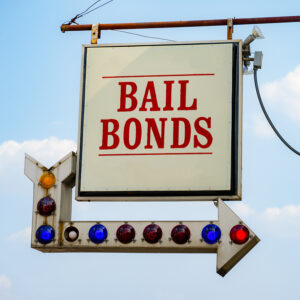Most of us don’t think about bail. It only comes to mind when we hear of an egregious crime or a celebrity in court.
What happens if you’re the one arrested and must go before a judge? The judge hears the evidence and, if there is some probability of guilt, may decide to set bail, which will be returned to you when you arrive for trial.
If you are poor and unable to make bail, you can pay a bail bondsman a fee of 10 to 15 percent to cover the bail.
Let’s say that you, solid citizen that you are, and someone with a low-wage job are both brought to court for the same offense, and the judge sets bail at $5,000 for each of you. That means a $500 payment to a bail bondsman, which you pay easily, pleased that the amount is nominal. Your counterpart, who does not have $500, goes to jail.
When your trial dates arrive several months later, you are both found innocent. You go home, pleased with the outcome, having missed only a day or two of work. Your equally innocent counterpart who has spent these months in jail returns to a world in shambles—possibly no job, his family in debt because of income lost, marital discord, and in some cases evicted from his home.
That is what often happens to the poor. Nearly half a million Americans are in jail, and, in some jails, up to 90 percent are there because they are unable to make bail. We believe our judicial system assumes we are innocent until proven guilty. If you cannot make bail, you are guilty until proven innocent.
Why would we have a system that is so blatantly prejudicial against the poor, who are predominantly people of color?
Since Blacks and other people of color are disproportionately poor, they are disproportionately affected by bias in the bail law. One in three Black men born today can expect to be confined in his lifetime, compared to one in 17 White men. Backed by solid evidence, experts argue that skin color has no relationship to crime, while poverty does.
Spending time in jail often means a life calamity, all possible before the accused even faces trial.
Along with racial overtones, bail is maintained in our country by fear. Recent events in the news illustrate how fear stokes public support of bail practices.
Politicians know that campaigns resonant with the Willy Horton images of the 1992 George H. W. Bush election can be very effective. As more and more progressive district attorneys have assailed the disparity of our bail practices and sought to loosen its rigidity, tough-on-crime advocates have pushed back with arguments of their own, emphasizing fear.
State Sen. Todd Kaminsky, the Democratic candidate for Nassau County district attorney, a supporter of bail revision, is a good example. Initially perceived as a shoo-in for election, he now faces intense competition from his Republican opponent, Anne Donnelly. She has effectively framed the contest as a suburban referendum on the state’s recent laws to loosen bail restrictions, highlighting the public’s perception of crime out of control and urges voters to “keep Nassau safe” by voting against “‘Turn ‘Em Loose’ Todd.”
Such fearmongering runs contrary to any data. There is no evidence of a causal relationship between crime spikes and bail reform.
It’s not as if there are no other means of getting people to trial. Research has shown that frequent telephone and electronic messaging achieve the same level of compliance as bail. Many doctors use this method to get people to meet doctor’s appointments. Electronic monitoring has proved to be highly effective for those with the slightest hint of violence or absconding. Some counties use questionnaires to determine the likelihood of flight. None of these approaches carry prejudicial or financial baggage.
Lawyers and money can keep the well-to-do from any concern of passing through a jail door while poverty-laden citizens must worry. The poor face the bail system.

